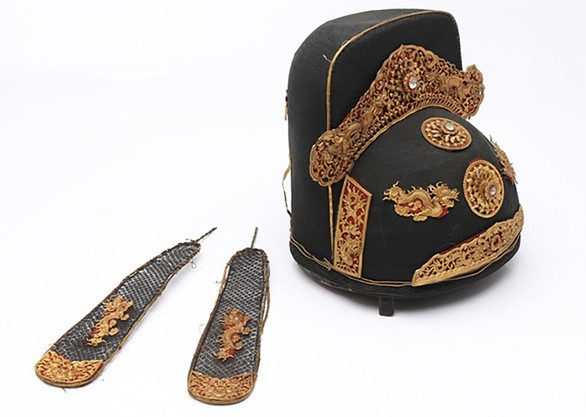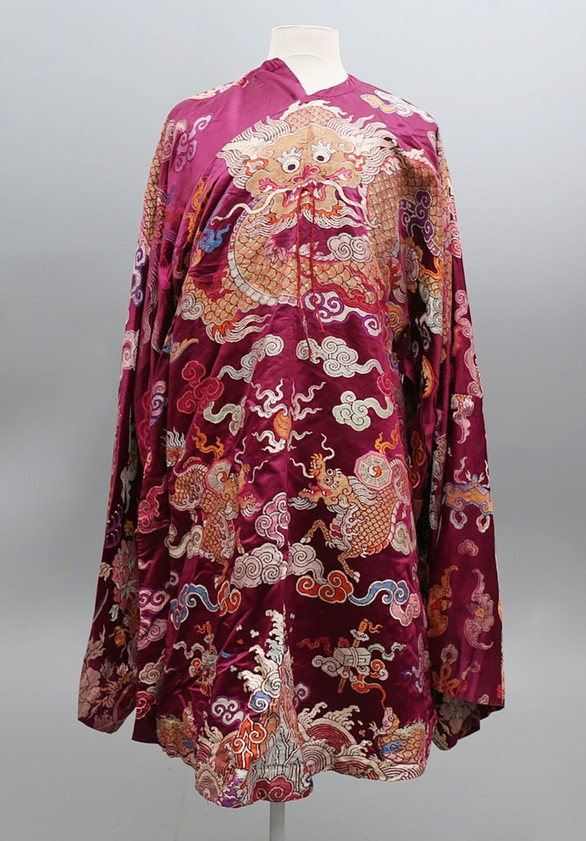"I wish that the recently auctioned hat and many other Vietnamese antiques won by foreigners would end up in the hands of museums and collectors, the more famous the better."

A Nguyen Dynasty mandarin hat was recently purchased for 600,000 euros (16 billion VND) - a record price for a Vietnamese antique. Photo: Balclis
"If you bring back antiques and leave them in the dark, in a shabby warehouse, without ensuring preservation, let alone displaying and promoting them, then they should not be repatriated."
This is the statement of antiques expert Tran Dinh Son, author of the book Dai Le Phuc Viet Nam of the Nguyen Dynasty and many works on Vietnamese antiques. Mr. Tran Dinh Son's point of view seems to be "contrary" to many opinions that Vietnamese antiques need to be repatriated.
- What do you think about the desire of many people to bring the hat auctioned for 16 billion VND back to Vietnam?
- It seems that people are paying too much attention to the high price and mistakenly thinking it is a national treasure. That hat is also valuable but it belongs to a mandarin, it is not that important. If it were a national seal or many taboo objects of the royal family that were stolen during the war, it would be different, but that hat is not that terrible, and the price is so expensive, so why bring it back home?
With this hat, the most important thing to know is its owner to know how to behave. The story of cultural artifacts trading between Vietnam and Western countries happened very early, maybe since the time of the Nguyen Lords. Westerners who cooperated with the court were given official uniforms. For example, French officials in the Gia Long period were given such uniforms, and they brought them back to their country. Many envoys or officials of the protectorate government were also ranked according to rank and given official uniforms like that...
This is also a source that people bring back authentically, not ours. As for hats that are identified as belonging to a historical figure, it is worth buying. Hats belonging to ordinary mandarins or gifts for ambassadors... should be kept in collections, in foreign museums, it is still "made in Vietnam", still plays a role in promoting Vietnamese culture to those who have not had the opportunity to visit Vietnam.
- What about the desire for foreigners to bid for Vietnamese antiques at the highest price possible?
- I think that Vietnamese antiques, except for those that are considered to be in dire need of being brought back to Vietnam, the rest are bought, sold, and collected around the world at the highest price possible, and in the most famous collections possible. Because that is the way to make the world's antique collectors pay attention to Vietnamese antiques, ancient Vietnamese fine arts, and more broadly, Vietnamese culture. Wherever they are, they are Vietnamese, they are all cultural products of our ancestors. Whether they are in England, America, or Japan, people will still see them as Vietnamese. Not to mention that thanks to being preserved in other countries, the antiques are still able to exist like this.

The Nguyen Dynasty's four-spirited robe was bought for about 930 million VND. Photo: Balclis
- So how do you think the repatriation of antiques should be?
- The issue of buying Vietnamese antiques from abroad and bringing them back to Vietnam, in my opinion, needs to be re-examined to avoid people going from one extreme to another. Previously, those objects were considered corrupt feudal heritages, burned and destroyed without mercy. Sometimes people demanded to buy them from all over the world and bring them back. Some people think that the State must buy all Vietnamese antiques and bring them back to the museum. Where is the money to buy them?
We have a system of rare antiques, representing most historical periods in museums from North to South, but they are not all displayed or utilized much.
We currently have standard museums built by the French, such as the History Museum in Hanoi and Ho Chi Minh City and the Cham Museum in Da Nang. In Hue, thousands of extremely rare Nguyen Dynasty artifacts are still stored in warehouses. After 1975, many of them collapsed, were damaged, and broken. Through several governments, Nguyen Dynasty artifacts are still temporarily housed in an ancient palace, and there is no proper museum for display. So why spend a lot of money to bring back precious artifacts when many precious artifacts are still in storage, so why repatriate them?
Not all Vietnamese antiques must be brought back to Vietnam. We must leave the antiques lying around, hoping that if one is lost, another will still be there. Of course, if there are necessary objects that need to be brought back to Vietnam, we must find a way, perhaps even through diplomacy or international law, for example...
Therefore, these issues need to be discussed carefully to have a policy for Vietnamese antiques abroad. It is agreed that we need to buy more and bring them back, but buying more is necessary, not spending the budget in the wrong place like that, while the country really needs to invest in essential projects for the country's livelihood.
According to Tuoi Tre